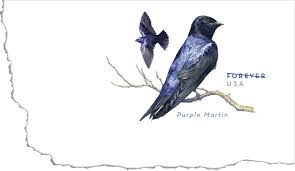Swallows, along with other birds that feed primarily on flying insects, are experiencing the greatest population decline of any group of birds in North America. The province was forced to add barn swallows to its list of protected species last year, after the birds experienced a drop of 60 to 98 per cent in numbers in recent years. One of the species, the purple martin, no longer breeds here. “It’s certainly alarming,” Blake Maybank, a naturalist and member of the Nova Scotia Bird Society, said in an interview Tuesday. “It’s happening across a whole suite of bird species, including all the birds that feed on flying insects, whether day or night.” Maybank said there has been a visible decline over the past 20 years of birds that migrate north and south. So what’s happening to the swallow population in Nova Scotia and across the Maritimes? That is what scientists are trying to find out.
Graduate student researchers at Dalhousie University in Halifax are studying swallows in their breeding grounds in an attempt to solve the puzzle.
Tara Imlay is a Phd candidate at Dalhousie and one of the scientists trying to find answers.
“It’s pretty serious all across North America,” she said Tuesday. “… Swallows and the larger group of birds known as aerial insectivores are declining rapidly.
“It’s the steepest decline of any group of birds. … They are dropping off much more quickly than any others.”
She is examining the relationship between daily insect abundance and the timing of swallow breeding. Imlay is tracking the swallows’ summer routines, insect populations, when the first eggs are laid and when they hatch. She is also examining chick survival rates.
She is hoping the data will help determine if a lack of insects — their primary food source — is limiting swallow population growth.
Imlay is also analyzing feather and blood samples collected throughout the summer in an attempt to determine if the birds’ wintering grounds may be having an impact.
The birds that migrate the farthest are declining the fastest, she said. It could be reduced habitat or pesticide and insecticide use. In some southern regions, birds make up part of the local diet.
“There are a lot of potential factors that really aren’t well understood,” said Imlay, originally from Wolfville. Understanding the causes for the decline in numbers is necessary in deciding what steps may be taken to reverse the trend.
The decline is especially alarming because swallows used to be so abundant and widespread, said Sarah Saldanha, a master’s student in biology also involved in the project.
In search of answers, Imlay and Saldanha spent the summer at a research station near Sackville, N.B., near a large swallow nesting colony. The project is a collaborative effort between Dalhousie, Acadia University and Ducks Unlimited.
The two scientists are also on Wildlife Preservation Canada’s swallow field team for 2014. The group works to help save critically endangered species.
In 2013, Nova Scotia added 19 animals and plants to its list of protected species, including the barn swallow, snapping turtle and three bat species.
The recent additions bring the total number of protected species in the province to 60.
Source: Herald News, September 16, 2014
http://thechronicleherald.ca/novascotia/1236869-researchers-seek-to-sol…

- Login om te reageren
